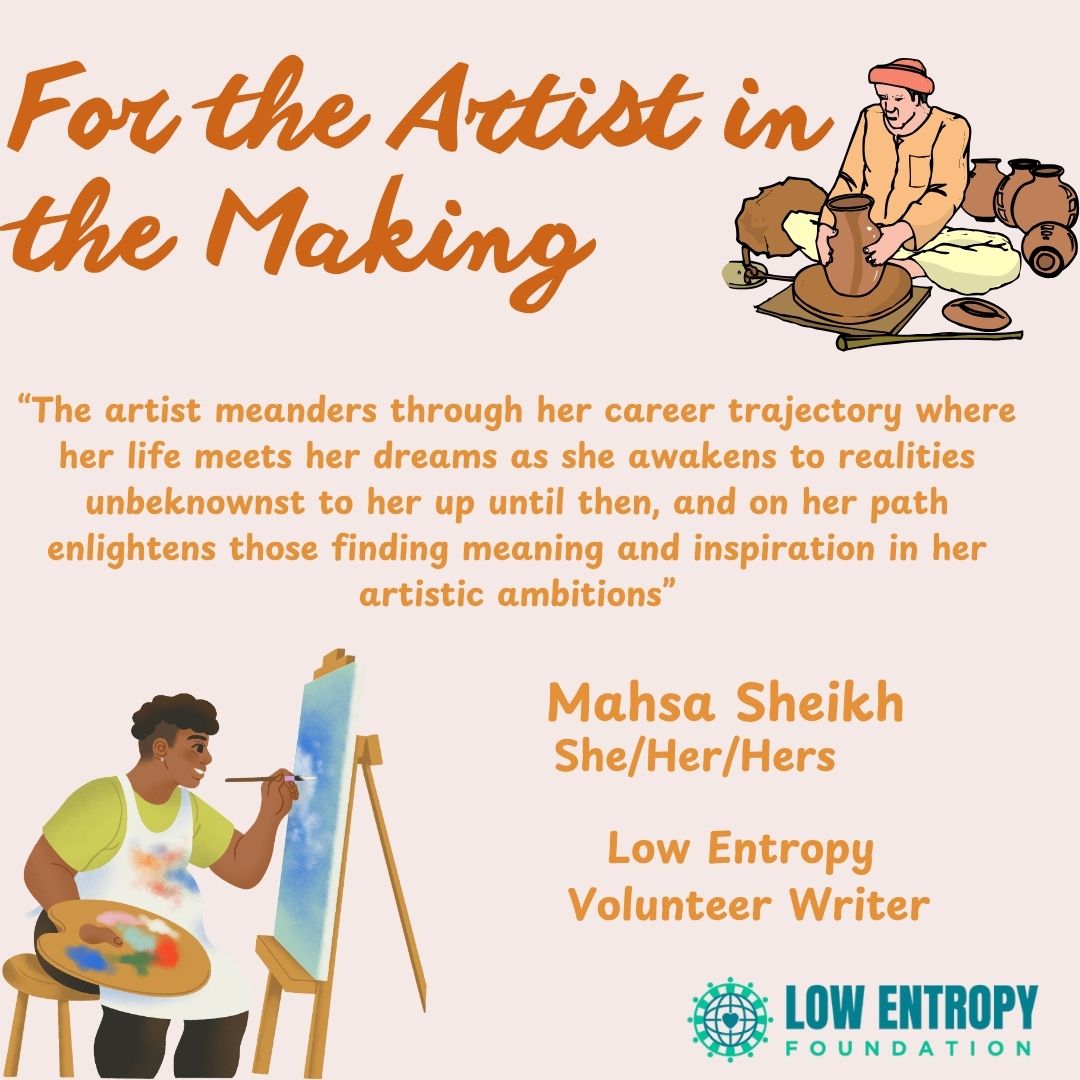Mahsa Sheikh, Low Entropy Volunteer Writer
Like all hand-made goods at the mercy of the market for their machine-made equivalents, the hand-knotted Persian rug is a work of art that has stood the test of time. Widely applied in bohemian-style interiors of our time, Persian rugs come in a multitude of designs ornate with a profusion of colours and motifs, and have adorned the interiors of Western families’ homes for a little over four centuries. The weaver of a Persian rug is a proud member of the art community she serves: every knot woven into the fabric of the rug in the making contributes to her household’s economy and tells the story of the artistry that goes in to the making of a thousands-years-old tradition that bedazzles the interiors of houses across the globe and provides a soulful warmth through motifs that replicate living things on Earth. The Persian rug, with its timeless features and practical appeal, can perhaps illuminate our quest to make a living from our artistic vision and experiences.
The labour that goes into making art—unlike what words such as labour or job, when used in context, connote—is fulfilling and rewarding; making art adds an internal value to the labour associated with its creation, and in so doing, it sets itself apart from the external value associated with labour carried out in a factory or mill; here the labourer comports with guidelines and regulations to bring the product to the market. The artist, on the contrary, breaks conventions and defies rules to bring her art to life.
Similar differences also exist between the runners of the two shows. On one hand, the product manager is there to serve a specific function, and that is to ensure that all items in a certain product line are identical and manufactured in a timely fashion to meet the market demand. The product is then shipped to department stores across the country and beyond to reach the targeted market for their seamless consumption. The artist, on the other hand, has no resembling ambitions—not even in her wildest dreams. Her motive in selling her art does not simply conclude in turning a profit off of a single item in order to secure a much-coveted space on the shelf of a department store or supermarket; her entire career rather thrives on experiments or serendipitous incidents that make each of her creations unique and identifiable from the other—despite having been created with the same tools and techniques or residing under the name of the same art collection. The artist meanders through her career trajectory where her life meets her dreams as she awakens to realities unbeknownst to her up until then, and on her path enlightens those finding meaning and inspiration in her artistic ambitions.
There are perhaps more than just one struggling artist out there who, despite themselves, admit to the fact that a career in arts is about anything but making a living or a name for oneself, per se. What makes art an attractive career, aside from fame or fortune, is that the time spent making it is as much a study of the self as it is a study of the subject at hand. As the artist treats the subject under study, she confronts all perspectives held about it in the present or the past while looking into making up her mind by articulating her own stance toward it—despite the marginality of her views at the time of their initiation, and in spite of the relative grandeur of others’. It is therefore the meditative qualities of art-making that qualifies it as a convincing career path to men and women, and many others, alike.
When art becomes a job, the artist at last gets to glean from a work that was from the very start a path to self-discovery and enlightenment, and the day finally arrives for her tenacity and brilliance to be recognized and bring abundance and satisfaction to another art enthusiast who has been yearning for the so-to-speak artist’s art and in desperate search for her work. Ask any accomplished artist, and they would explain—possibly at great length and in far better words—that more than being a job, art is a calling; however, to be able to respond to such a calling, irrespective of what it is and how best to respond to it, the artist will have to keep her art as a job, and to keep it as a job, she will have to exercise great care and responsibility, whether to her immediate liking or not. In other words, art becomes a job when the artist makes a promise to use her talents for the advancement of herself and those who become interested in her work and life. The artist in the making therefore welcomes her trials and tribulations as a lot and strives to create her art in the hope that it sells as her signature work.
—
Leave your thoughts for Mahsa in the comments below. You can also follow us on Facebook, Instagram, TikTok, LinkedIn and YouTube to stay up-to-date with Low Entropy news!

